- Bernard Preston homepage
- Legumes
- Cooking Time for Dried Beans
Cooking time for dried beans
The cooking time for dried beans can be greatly reduced under pressure; concern about anti-nutrients comes into the equation. Whether to soak them overnight also gets the chefs arguing.
Some people find that dried beans soaked before cooking give less gas and bloating.
- Soak them overnight: 1,5 hours.
- Soak overnight and pressure-cook: 30 minutes.
- Without soaking: 2 hours
The pressure-cooker wins hands down when weighing the cooking time for dried beans.
Cooking time for dried beans: First choice
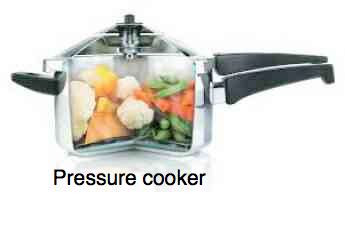
Pressure-cookers save time and energy; that also means it's good for the busy chef and the planet.
Lower down on this page we'll discuss the whole issue of anti-nutrients but for the present we recommend you pressure-cook your dried beans in the water you have soaked them in; they really do taste better.
"We tried the quick-soak method, retaining the liquid and although the cooking time didn’t vary much, the flavor was our favorite of the bunch."
- Epicurious
Soak overnight and pressure-cook
- Wash the beans to get rid of any dust and dirt.
- Soak the beans overnight in the pressure-cooker, covering with at least 5cm of water.
- Add 1 tsp salt and half a lemon; and a sprig of thyme or a bay leaf.
- Add boiling water to cover the saturated beans in the morning.
- Pressure-cook for thirty minutes.
- Turn off the power and wait for the pressure to drop.
- Continue to simmer with the lid off until tender.
Second choice
- Wash the beans and add to any heavy-bottomed pot.
- Add 1tsp salt, half a lemon and the herbs of choice.
- Cover the beans with 5cm of boiling water.
- Bring to the boil and allow them to soak for an hour; with the lid on.
- Add more boiling water until covered and cook for another half an hour.
- Continue to simmer with the lid off until tender.
The wonder box
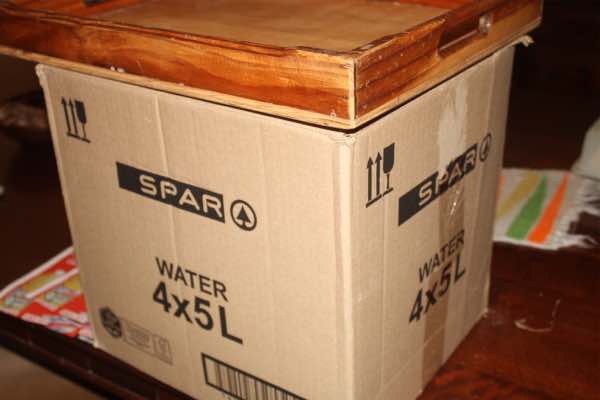
The homemade wonder box is another option; bring the soaked beans to the boil and keep them hot overnight.
Keep the cooking liquid
Whether you should keep the cooking liquid or not depends on your total lifestyle; retaining the water certainly improves the flavour. So what's the problem?
The answer is a very controversial subject; these anti-nutrients do inhibit the absorption of minerals in your beans. If your lifestyle is good, your overall diet excellent and you exercise regularly you need have no fear of lectins and phytates.
But for those whose diet is less than excellent, where minerals are likely to have been refined out of their food, then rinsing the legumes to remove the anti-nutrients is advisable. They have already accepted that their are meals are less tasty so it should not be an issue.
All are agreed incidentally that the flavour of dried beans in cans is second rate.
Cooking time for dried beans
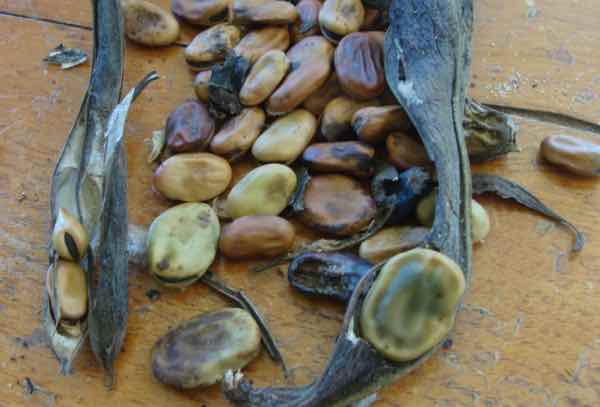
Cooking time for dried beans depends on whether you soak them or not; and the size of the legume. You can prepare lentils in a jiffy.
These dried fava beans take a good half hour to pressure cook even if you soak them.
It's been a hard lesson for us to learn; saving our own bean seeds has been eminently worthwhile. They cross with other varieties and gradually become far better suited to our area than those purchased from the gardening centre; length of harvesting and resistance to disease, for example.
You save a lot of money having your own seeds too.
Flexitarian diet and beans
Few of us have the desire to give up meat entirely. Yet we know that all the research is pointing to those who are over-reliant on animals for protein are also less resilient in the face of disease.
Those living in the so-called Blue Zones of the world where longevity is the word all regularly enjoy beans and peas as part of their diet.
Also farmers can grow ten times as much protein on an acre of ground by planting beans instead of keeping cattle; they use a fraction of the water and produce no greenhouse gases.
Within a few short decades almost all humans will be forced to become flexitarian; eat meat perhaps once or twice a week and rely on legumes for their protein. Understand the issues surrounding the cooking time for dried beans will be core to making this change of lifestyle.
Green beans
Green legumes have far less lectins; given the choice they are always the better option. And the cooking time for dried beans is much longer.
Green beans taste better too; much nicer than those dried favas above that we retain mainly for seed now.
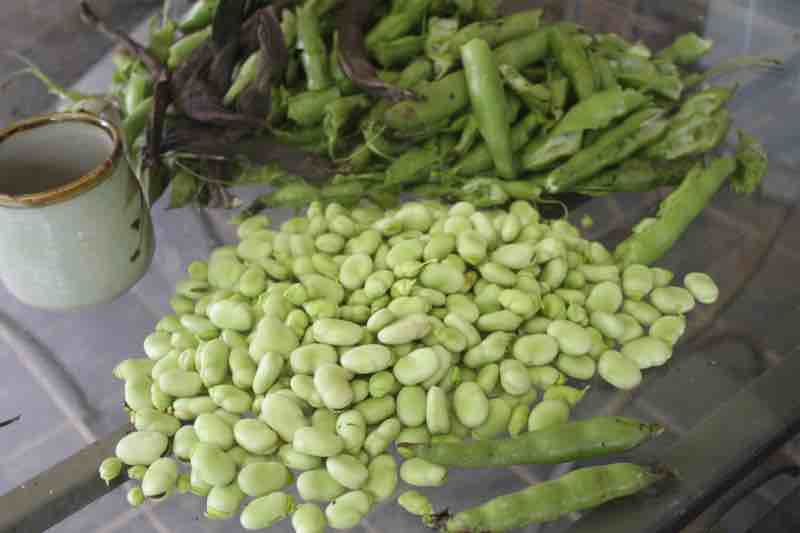
These green favas are from just two plants; no worries about cooking time for beans. Only five minutes is needed; they taste better too.
In a mild climate you can have green pole, lima or broad beans in every month of the year; not in Chicago though.
Broad beans also known as favas incidentally, are one of the richest sources of vegetable protein; and uniquely are able to help patients with Parkinson's disease[1].
They are the only common source of L-dopa.
Freezing green beans
So freezing green beans over cooking them when dried is our first choice if you cannot grow them all year round.
Those with a tremor should know about freezing broad beans in any case so they would have a daily supply of dopamine from their food.
Dopamine is also known as the happy hormone; it would do none of us any harm to enjoy them regularly. In all five Blue Zones where longevity is the word they grow and eat them.
Gardening with beans
Learning how to make a vegetable garden trellis[2], the use of rhizobia to inoculate their roots and the benefit of the nitrogen capture from the atmosphere[3] by legumes all make gardening with beans and peas central to backyard permaculture.
Get started if it is your desire to live a long and zestful life, resistant to the many diseases that plague us today.
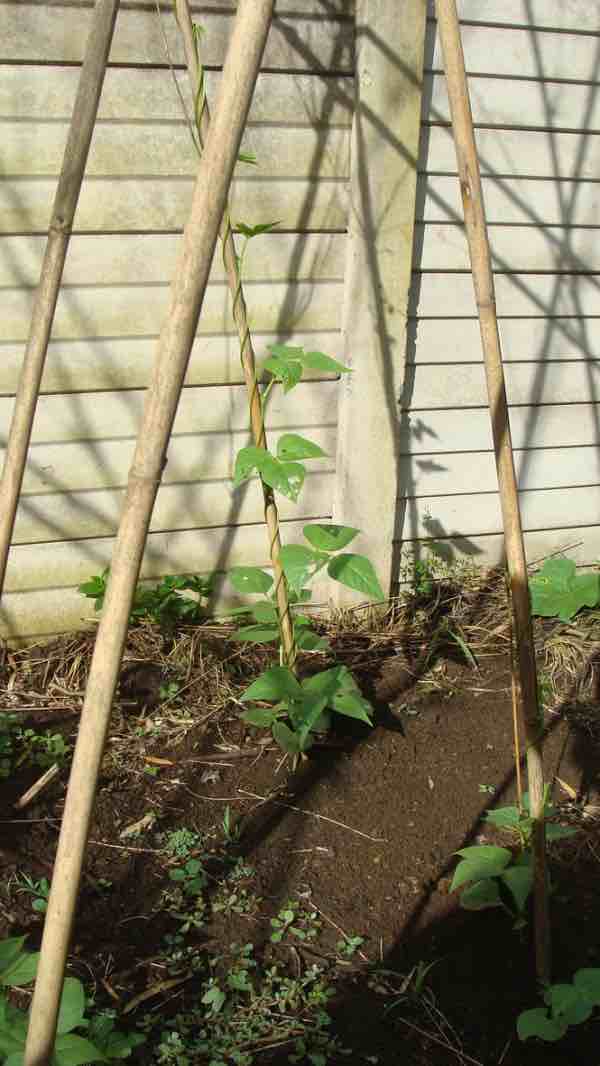
These pole beans will be a wonder within a few weeks.
Time
We should face it up front; growing, harvesting and the cooking time for dried beans is a big investment of our energy and the limited hours in a day.
We justify the time spent because our own beans taste so much better, they are the best source of fibre for the gut and it's great exercise out in the sunshine for vitamin D.
But it does take time. For example the tying of broad bean stems has to be done several times a week; it is tedious but the queen of legumes grows incredibly fast. If you don't do it, with the weight of the pods they snap off and you lose much of the crop.
Broad beans are the only source of pharmaceutical amounts of dopamine. They are in fact a better form of treatment than drugs for most of those suffering from Parkinson's Disease; but it all takes time.
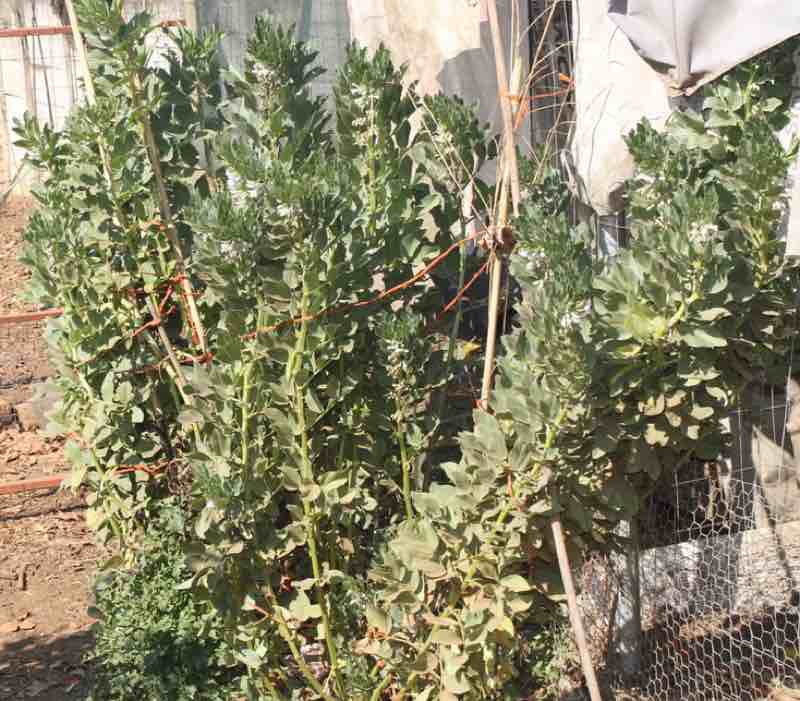 Broad beans are the only natural source of dopamine
Broad beans are the only natural source of dopamineWhen browsing use right click and "Open Link in New Tab" or you may get a bad gateway signal.
Newsletter
Our newsletter is entitled "create a cyan zone" at your home, preserving both yourself and Mother Earth for future generations; and the family too, of course. We promise not to spam you with daily emails promoting various products. You may get an occasional nudge to buy one of my books.
Here are the back issues.
- Lifestyle and ideal body weight
- What are ultra-processed foods?
- Investing in long-term health
- Diseases from plastic exposure
- Intensive lifestyle management for obesity has limited value
- A world largely devoid of Parkinson's Disease
- The impact of friendly bacteria in the tum on the prevention of cancer
- There's a hole in the bucket
- Everyone is talking about weight loss drugs
- Pull the sweet tooth
- If you suffer from heartburn plant a susu
- Refined maize meal and stunting
- Should agriculture and industry get priority for water and electricity?
- Nature is calling
- Mill your own flour
- Bake your own sourdough bread
- Microplastics from our water
- Alternative types of water storage
- Wear your clothes out
- Comfort foods
- Create a bee-friendly environment
- Go to bed slightly hungry
- Keep bees
- Blue zone folk are religious
- Reduce plastic waste
- Family is important
- What can go in compost?
- Grow broad beans for longevity
- Harvest and store sunshine
- Blue zone exercise
- Harvest and store your rainwater
- Create a cyan zone at your home
Did you find this page interesting? How about forwarding it to a friendly book or food junkie? Better still, a social media tick would help.
- Bernard Preston homepage
- Legumes
- Cooking Time for Dried Beans
Address:
56 Groenekloof Rd,
Hilton, KZN
South Africa
Website:
https://www.bernard-preston.com